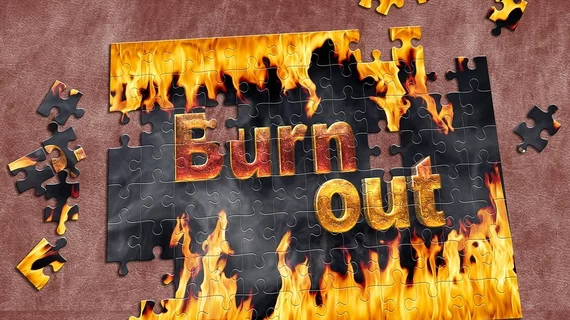Though many studies focus on burnout in American healthcare professionals, Canadian researchers are saying the issue isn’t bound by borders. It’s an international problem.
A recent article published in the Journal of the American College of Radiology by Michael N. Patlas, MD, of the Hamilton General Hospital in Hamilton, Ontario, Canada, and colleagues sought to compare key differences in the Canadian and U.S. radiological communities to examine potential factors that exacerbate burnout.
Patlas and colleagues outlined three key topics that have increased burnout rates among Canadian radiologists.
Coping with increased workload
Improved availability has more patients undergoing imaging. Workloads, the authors noted, have increased by more than 26 percent over the last 12 years—and the workforce is still trying to catch up.
There are only 6.9 radiologists per 100,000 people in Canada, compared to 10.83 in the U.S.
“That relative shortage of radiologists in Canada thus limits the implementation of such best practice burnout prevention strategies, potentially exacerbating the emotional exhaustion and depersonalization already present in the radiology workplace,” the authors wrote.
Financial and employment constraints
Salaries for Canadian residents have grown less than inflation, so young radiologists find it particularly difficult to cope with financial burdens. Additionally, the authors wrote, radiology has an “unfavorable” employment market and is coupled with declining reimbursement.
“Despite such shortcomings in both countries, U.S. radiologists seem to have easier access to privatize practice level incomes: In Canada, 13 percent of radiologists reported private practice as their main work setting compared with 53 percent in the United States,” Patlas and colleagues wrote.
Roles within healthcare teams
Academic radiologists in Canada, on average, spend only four hours per week on research and professional development, while one American group has recommended a full day for these pursuits.
Isolation from other members of the patient care team and feelings of helplessness can contribute to radiology burnout.
“One study found on-site radiologists average six interactions per hour with other members of their healthcare teams, and that 81 percent of those interactions directly affected patient care,” the authors wrote.
Moreover, the authors noted interactions with other physicians gives radiologists a sense of personal accomplishment.
“Although most commonly described in the United States, burnout in radiology is a global phenomenon that threatens the ability of the specialty to recruit, retain, and offer the highest quality imaging care,” the researchers concluded. “Unique factors in Canada—probably as in other non-US countries—create particular challenges and opportunities. Regardless of country, however, the solution to burnout begins with symptom recognition, and changes within radiology practices—and the specialty more broadly—should be prioritized.”

